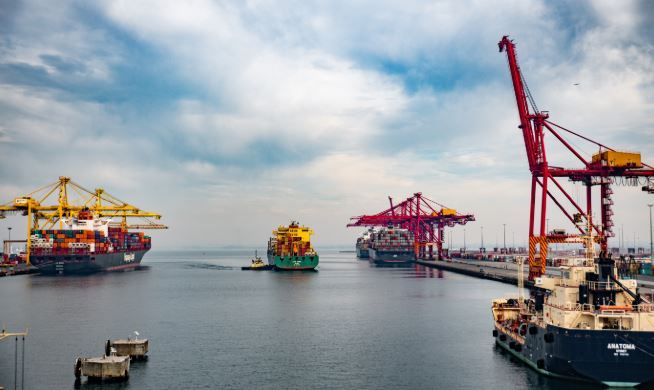
Chinese ports have suffered substantial losses in volumes as a result of the Covid-19 pandemic that began in Wuhan, China during January.
Total container volumes were down 8.5% compared to the same period last year and amounted to 55.18 million TEU. Some 3.073 billion tonnes of shipments were moved to and from ports in China in the first quarter (January-March) of 2020, down 4.6% from a year earlier, according to the nation’s Ministry of Transport (MOT). Oceangoing freight accounted for 1.021 billion tonnes, up 0.3%.
Container volumes at major ports, such as Tianjin in the north, a 1.9% decrease in volumes to 3.71 million TEU. In contrast, throughput continued to register positive growth at Qingdao, Shandong Province, going up 2.2% to 5.04 million TEU.
In one of the most important regions for container exports, the Yangtze River Delta region, Shanghai incurred a double-digit contraction, with container throughout plunged 10.4% to 9.33 million TEU.
Cargo into and and out of Ningbo-Zhoushan fell 8.2% to 6.15 million TEU, while Xiamen on the southeast coast handled 2.52 million TEU, down 6.5%. Ports in the Pearl River Delta also suffered a downturn, with containers to and from Guangzhou plummeting 10.3% to 4.74 million TEU and Shenzhen, 11.9% to 5.33 million TEU.
On the southwest coast, Qinzhou Port has bucked the trend handling 920,000TEU, up 32.6%, it was the only port in China to enjoy a double-digit improvement in container lifting. Qinzhou Port’s volume increase reflects the regions increasing links with Southeast Asian economies and the development from China’s ‘Go West’ policy.
At the same time, containers traded between China and South Korea in the first quarter (January-March) of 2020 amounted to 679,707TEU, down 5.06% year on year, according to statistics compiled by the Yellow Sea Liner Shipping Council (YSLSC). Local containers accounted for 627,822TEU, down 4.99%, and feeder containers handled stood at 51,835TEU, down 5.94%.
South Korea exported 262,248TEU to China, down 2.21%. Local cargo decreased 0.62% to 246,394TEU, while feeder cargo plunged a much more significant 21.4% to 15,854TEU. Meanwhile, imports to South Korea from China fell 6.77% to 417,459TEU. Local containers diminished 7.61% to 381,478TEU, but feeder containers swelled 3.17% to 35,981TEU.
Source: JIFFA








